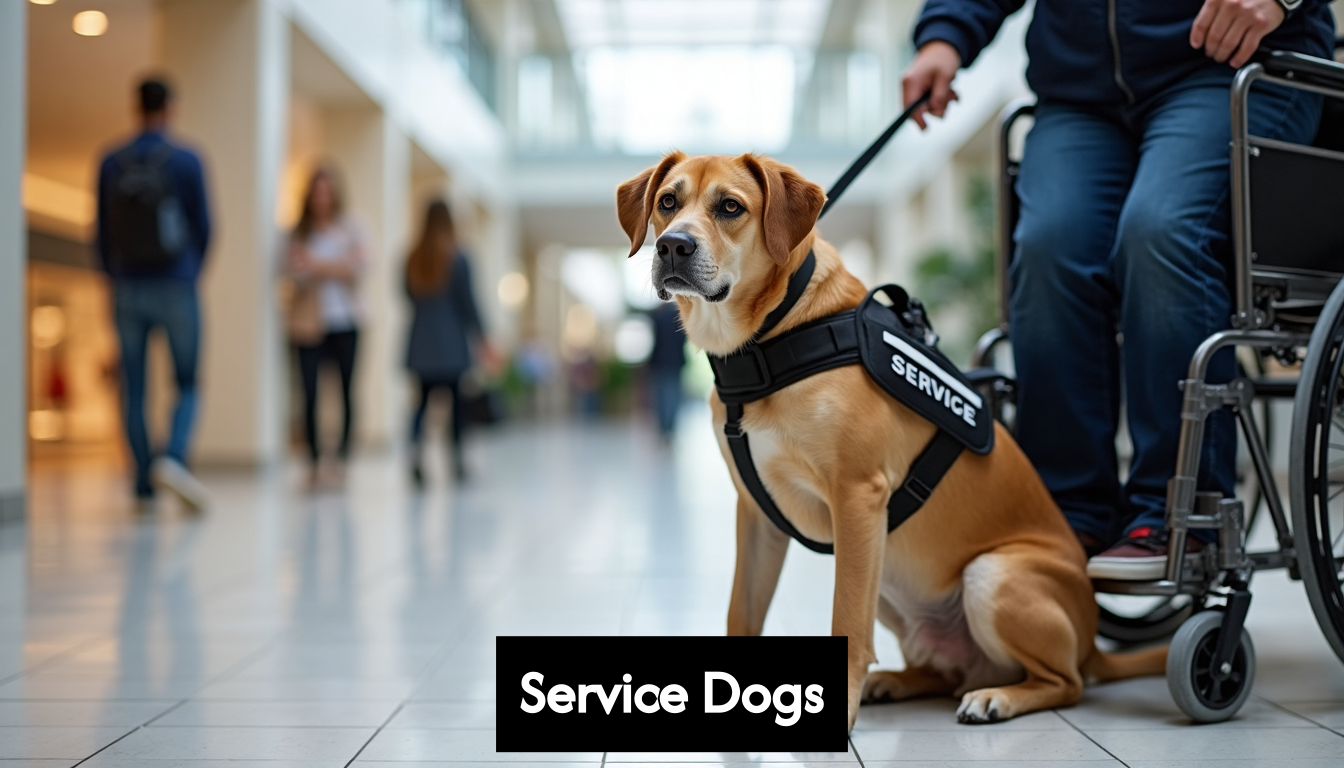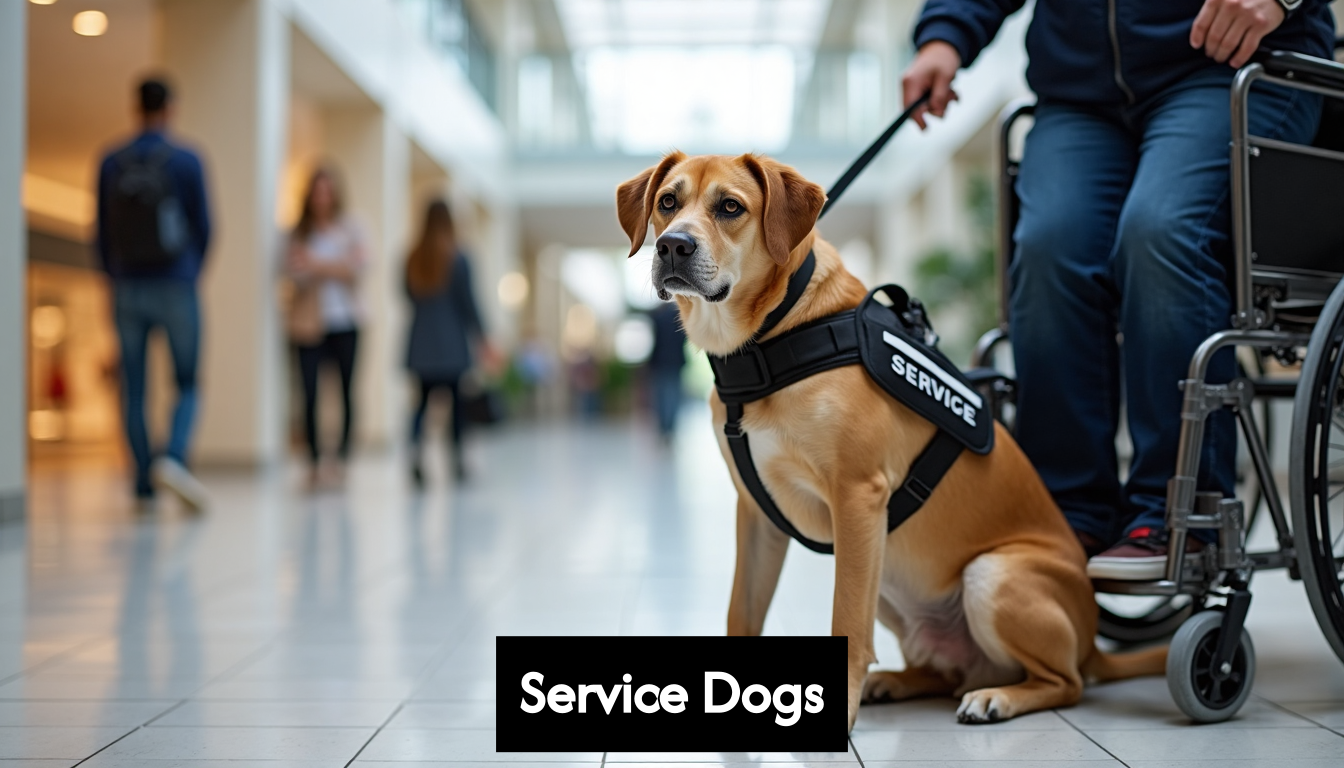
Training a service dog takes more than simple obedience lessons. Every year, thousands of dogs start the journey but only a fraction make it through. It can take up to three years of dedicated, specialized training for a dog to be ready to assist someone with disabilities. Most people think the vest and badge are what matter. That’s where it gets surprising. Those outward signs mean nothing if the real secret—temperament and truly customized skill training—isn’t there. What determines success is not what you see at first glance, but how the dog can transform everyday challenges into moments of independence for their handler.
Table of Contents
- Understanding The Role Of Service Dogs
- Key Qualities And Basic Training Foundations
- Step-By-Step Guide To Service Dog Tasks
- Legal Considerations And Handler Support
Quick Summary
| Takeaway | Explanation |
|---|---|
| Service dogs enhance independence and quality of life | These animals support individuals with disabilities, fostering social interaction and personal autonomy through specialized task performance. |
| Rigorous training is crucial for service dogs | The journey from puppy to certified service dog involves two to three years of specialized training, focusing on temperament, obedience, and task-specific skills. |
| Understanding legal rights is essential for handlers | The Americans with Disabilities Act provides service dogs with public access rights, ensuring handlers can navigate environments without discrimination or extra fees. |
| Ongoing support and education are vital for success | Handlers should be proactive in seeking resources and support to manage training challenges and understand their legal protections over time. |
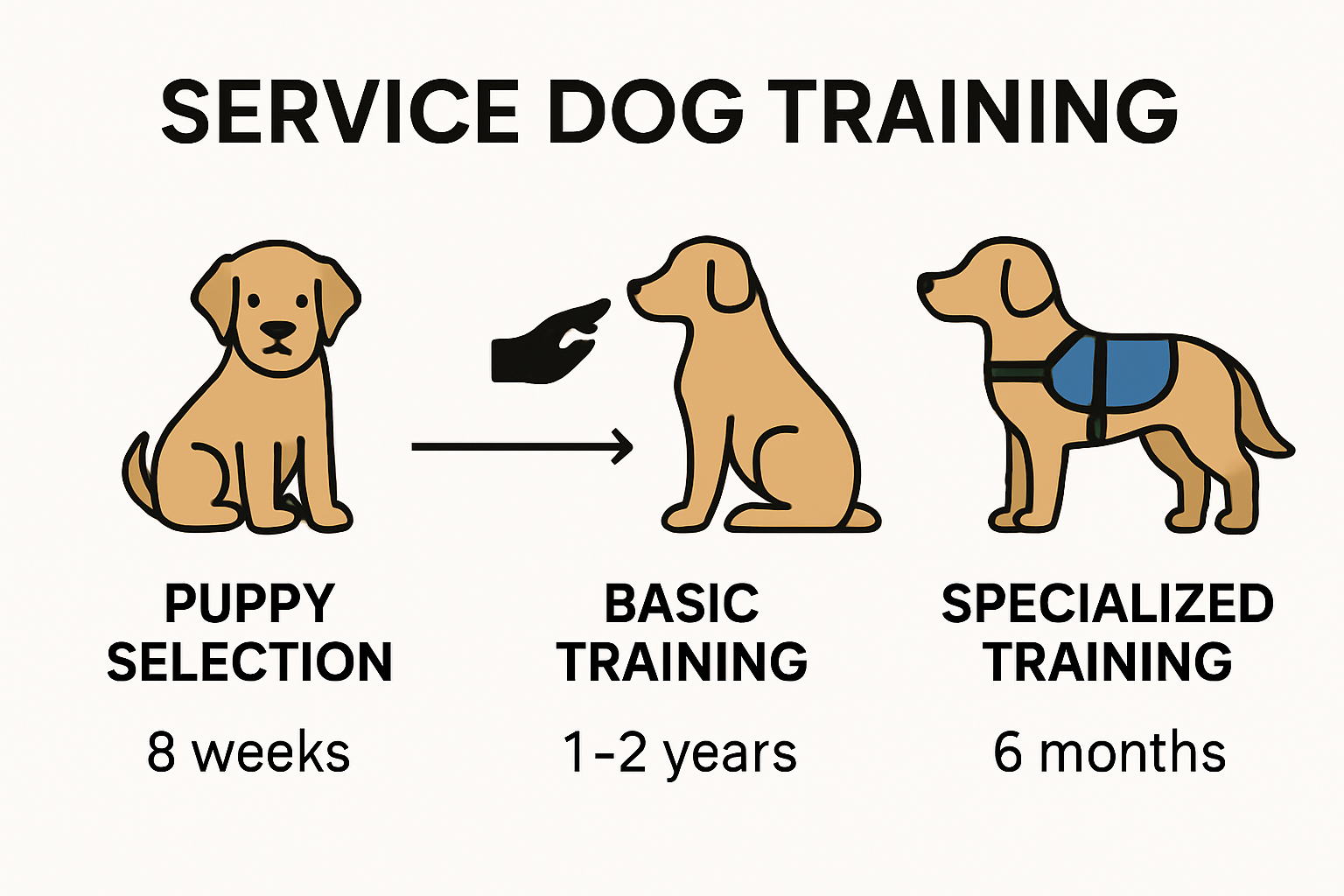
Understanding the Role of Service Dogs
Service dogs represent far more than just companion animals. These highly trained professionals play a critical role in supporting individuals with various disabilities, transforming lives through specialized task performance and unwavering dedication.
The Specialized Purpose of Service Dogs
Unlike typical pets, service dogs undergo extensive training to perform specific tasks that directly mitigate their handler’s disability challenges. Learn more about specialized service dog training reveals the complexity of their preparation. According to research from the Global Initiative for Canine Communication, these remarkable animals are trained to support handlers across multiple disability categories including physical, psychiatric, sensory, and developmental conditions.
The tasks performed by service dogs are incredibly diverse. For individuals with mobility impairments, dogs might help retrieve objects, open doors, provide balance support, or assist with wheelchair navigation. Individuals with hearing disabilities benefit from dogs that alert them to important sounds like doorbells, alarms, or approaching people. Those with medical conditions such as epilepsy or diabetes receive critical alert services where dogs can detect and warn about potential medical episodes before they occur.
Independence and Quality of Life Enhancement
Beyond task performance, service dogs dramatically improve their handlers’ quality of life and independence. Research indicates that the presence of a well-trained service dog can significantly increase an individual’s confidence to engage with the world, fostering opportunities for social interaction, workforce participation, and personal autonomy.
Psychiatric service dogs provide equally transformative support for individuals managing conditions like post-traumatic stress disorder (PTSD), anxiety, and depression. These dogs are trained to recognize and interrupt potential emotional spirals, provide grounding techniques, create physical barriers in crowded spaces, and offer consistent emotional regulation support.
Public Understanding and Legal Protections
Contrary to common misconception, service dogs are not defined by wearing a vest or having a specific appearance. According to service dog experts, their legal status is determined by specialized training and their ability to work effectively with their handler. The Americans with Disabilities Act provides critical legal protections, ensuring these dogs can accompany their handlers in public spaces where typical pets would be restricted.
The selection and training of a service dog is a rigorous process. Not every dog has the temperament, intelligence, and focus required to become a successful service animal. Breeds like Labrador Retrievers, Golden Retrievers, and German Shepherds are often preferred due to their trainability, calm demeanor, and physical capabilities. However, individual dog personality and specific handler needs ultimately determine the most suitable match.
Training a service dog requires patience, expertise, and a deep understanding of both canine behavior and human disability support needs. The journey from a potential puppy to a fully certified service dog can take two to three years of consistent, specialized training. This investment ensures that when a service dog is matched with their handler, they are prepared to provide life-changing support with precision, reliability, and compassion.
Key Qualities and Basic Training Foundations
Successful service dog training begins with identifying and cultivating the right combination of temperament, skills, and behavioral characteristics. Not every dog has the potential to become an exceptional service dog, making careful selection and foundational training crucial.
Essential Temperament Requirements
Research from professional canine training organizations highlights five critical qualities that define an outstanding service dog: calmness, friendliness, adaptability, alertness, and confidence. These traits enable dogs to remain composed and responsive across diverse and potentially challenging environments.
Calm demeanor stands as the cornerstone of service dog behavior. Dogs must maintain composure in crowded spaces, resist distractions, and remain focused on their handler’s needs. Friendliness does not mean excessive excitement but rather a balanced, approachable temperament that allows comfortable interaction with strangers and other animals. Adaptability ensures the dog can transition smoothly between different settings like public transportation, offices, restaurants, and medical facilities.
Alertness differentiates service dogs from typical companion animals. These dogs must remain vigilant to their handler’s potential medical or emotional needs while simultaneously maintaining discipline and control. Confidence allows them to navigate complex environments without showing signs of fear, anxiety, or aggression.
Foundational Obedience Training
According to service dog training experts, foundational obedience represents the critical framework for advanced service dog skills. Basic commands like sit, down, stay, come, heel, and leave it form the fundamental language of communication between handler and dog. Training should begin in distraction-free environments, with sessions kept short (5-15 minutes) but frequent (3-5 times daily).
Initial training focuses on building reliability and control. Professional trainers recommend breaking complex behaviors into smaller, achievable steps. Positive reinforcement techniques using treats, praise, and consistent repetition help dogs understand and internalize expected behaviors. Gradually increasing environmental complexity helps dogs generalize learned skills across different contexts.
Advanced Socialization and Public Access Skills
Beyond basic obedience, service dogs require extensive socialization to prepare them for public interactions. This involves systematic exposure to various environments, sounds, people, and potential distractions. Training must help dogs remain focused and responsive regardless of external stimuli.
Learn more about advanced service dog training reveals the nuanced approach required. Dogs must learn to ignore food on the ground, remain calm around other animals, walk politely on a leash, and immediately respond to handler commands even in challenging situations.
Public access training simulates real-world scenarios, teaching dogs to navigate crowded spaces, ignore potential distractions, and maintain professional behavior. This includes practicing in shopping centers, public transportation, restaurants, and other environments where service dogs might accompany their handlers.
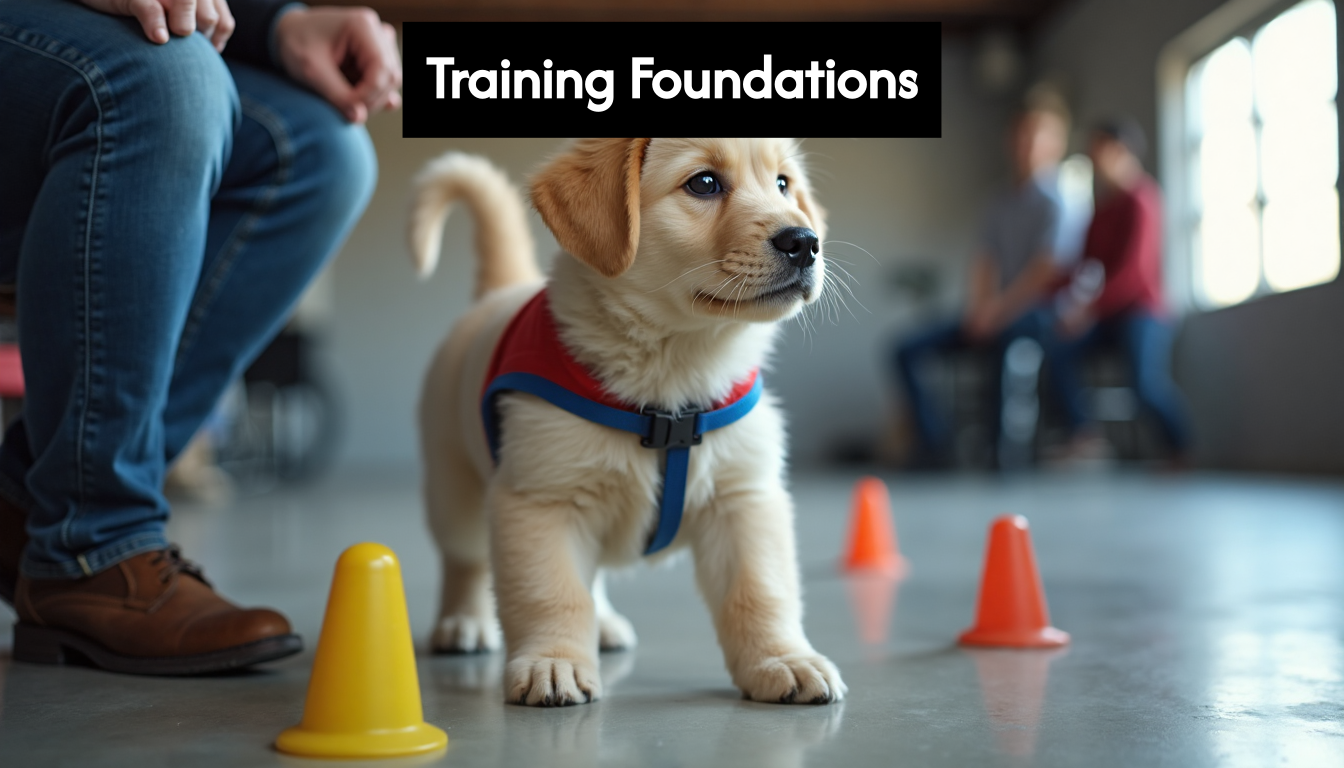
The journey to becoming a service dog is comprehensive and demanding. It requires patience, consistent training, and a deep understanding of both canine behavior and specific handler needs. Not every dog will successfully complete this rigorous process, but those who do become extraordinary partners capable of transforming lives through their specialized skills and unwavering dedication.
Step-by-Step Guide to Service Dog Tasks
Training a service dog requires a methodical, patient approach that transforms general obedience into specialized task performance. Each service dog’s training journey is unique, tailored to the specific needs of their future handler and the challenges they will help mitigate.
Early Foundation and Task Selection
Research from veterinary training experts indicates that effective service dog training begins as early as eight weeks old, with a comprehensive approach that gradually builds complexity over 18 to 24 months. Learn more about advanced service dog skill development reveals that trainers must first assess the dog’s natural strengths and match them with potential task requirements.
Task selection is not a one-size-fits-all process. For mobility support dogs, tasks might include retrieving dropped items, opening doors, providing balance assistance, or helping a handler navigate physical spaces. Medical alert dogs require training to recognize specific physiological changes such as blood sugar fluctuations, oncoming seizures, or heart rate variations.
Psychiatric service dogs undergo specialized training to interrupt anxiety episodes, provide grounding techniques, create physical barriers in crowded spaces, or perform deep pressure therapy during emotional distress. Each task must be carefully taught using positive reinforcement and broken down into manageable steps that the dog can consistently and reliably perform.
Systematic Training Methodology
Comprehensive training frameworks recommend tracking progress across multiple dimensions. Trainers typically develop a structured approach that includes documenting over 100 potential tasks and experiencing more than 145 socialization scenarios. The training process involves multiple critical stages:
- Fundamental command mastery
- Task-specific skill introduction
- Distraction and complexity management
- Public access skill development
- Handler-specific customization
Each stage requires meticulous attention to detail. For instance, a task like medical alert requires the dog to not just recognize a specific condition but also respond with a predetermined action that provides tangible assistance to the handler. This might mean fetching medication, activating an emergency alert system, or providing physical support during a medical episode.
Advanced Performance and Generalization
The final phase of service dog training focuses on task reliability and environmental generalization. Dogs must demonstrate the ability to perform their specialized tasks consistently across various settings—from quiet home environments to bustling public spaces with numerous distractions.
Professional trainers simulate complex scenarios to ensure the dog can maintain focus and perform tasks under stress. This includes practicing in crowded areas, managing unexpected loud noises, interacting with other animals, and responding immediately to handler commands regardless of external stimuli.
The journey from a potential puppy to a fully certified service dog is intensive and demanding. Not every dog will successfully complete the rigorous training process. Those who do become extraordinary partners represent the pinnacle of canine training—animals capable of providing life-changing support through their specialized skills, unwavering focus, and deep connection with their handlers.
Legal Considerations and Handler Support
Navigating the legal landscape of service dog ownership involves understanding complex rights, responsibilities, and protections that ensure equal access and support for individuals with disabilities. Service dog handlers must be well-informed about their legal rights and the specific guidelines governing service animal interactions in public spaces.
Legal Rights and Public Access Protections
According to the Americans with Disabilities Act (ADA), service dogs are granted extensive public access rights that protect their handlers’ ability to navigate social environments. Business owners and public space managers are limited in their interactions with service dog teams. They may only ask two specific questions: whether the dog is required because of a disability and what tasks the dog has been trained to perform.
Crucially, businesses cannot demand additional documentation, certification, or impose extra fees for service dog presence. This legal protection ensures that individuals with disabilities can move freely and independently without facing unnecessary barriers. The law recognizes that service dogs are working animals, not typical pets, and their primary function is to mitigate specific disability-related challenges.
International standards from Assistance Dogs International further emphasize that handlers have the right to train their own service dogs. There is no legal requirement mandating professional training or third-party certification, provided the dog is specifically trained to perform tasks directly related to the handler’s disability.
Training and Certification Considerations
While no official certification is legally required, Learn more about service dog training guidelines highlights the importance of comprehensive preparation. Handlers must ensure their dogs demonstrate consistent, reliable task performance and maintain appropriate public behavior. This means mastering basic obedience, remaining calm in various environments, and responding immediately to handler commands.
Some organizations offer voluntary certification programs that can provide additional credibility and support. These programs typically assess the dog’s training level, task proficiency, and public access skills. Although not legally mandatory, such certifications can help reduce potential confrontations and provide handlers with additional resources and documentation.
Handler Support and Ongoing Resources
Support for service dog handlers extends beyond initial training. Assistance Dogs International standards emphasize the importance of ongoing education, resources, and welfare support for both the handler and the service dog. This includes guidance on maintaining the dog’s health, managing training challenges, and understanding evolving legal protections.
Handlers should be prepared to advocate for themselves and their service dogs. This might involve educating businesses about legal rights, managing public misconceptions, and ensuring their dog remains well-trained and responsive. Support networks, online communities, and specialized organizations can provide valuable guidance and emotional support throughout the service dog journey.
Financial considerations are also important. While service dogs are working animals and not considered typical pets, handlers may face significant training and care expenses. Some organizations offer grants, fundraising support, and resources to help mitigate these costs. Read our comprehensive guide on service dog support for more detailed information about navigating these challenges.
The relationship between a service dog and their handler is deeply personal and transformative. Legal protections and support systems exist to ensure this partnership can flourish, providing individuals with disabilities the independence, mobility, and quality of life they deserve. Understanding these legal considerations is not just about knowing rights—it’s about empowering service dog teams to navigate the world with confidence and dignity.
Frequently Asked Questions
How long does it take to train a service dog?
Training a service dog can take up to three years of dedicated, specialized training to ensure they can assist individuals with disabilities effectively.
What tasks can service dogs perform?
Service dogs can perform a variety of tasks, including retrieving objects, alerting their handler to important sounds, providing balance assistance, and recognizing medical conditions to alert their owners.
What qualities should a service dog have?
An ideal service dog should exhibit calmness, friendliness, adaptability, alertness, and confidence. These traits help them remain focused and responsive in diverse environments.
Do service dogs require official certification?
While there is no legal requirement for service dogs to have certification, demonstrating their ability to perform tasks reliably and maintaining appropriate public behavior is essential for handlers.
Unlock True Service Dog Independence with iPupPee Solutions
You have read how specialized training and clear communication transform service dogs into life-changing partners. Yet despite months or even years of dedicated work, one of the toughest challenges for both handlers and their dogs is having an easy, reliable way to signal needs—especially in moments of urgency or when safety is at risk. Without simple and effective communication, even well-trained dogs can feel uncertain and handlers may face unnecessary worry or lose precious independence.
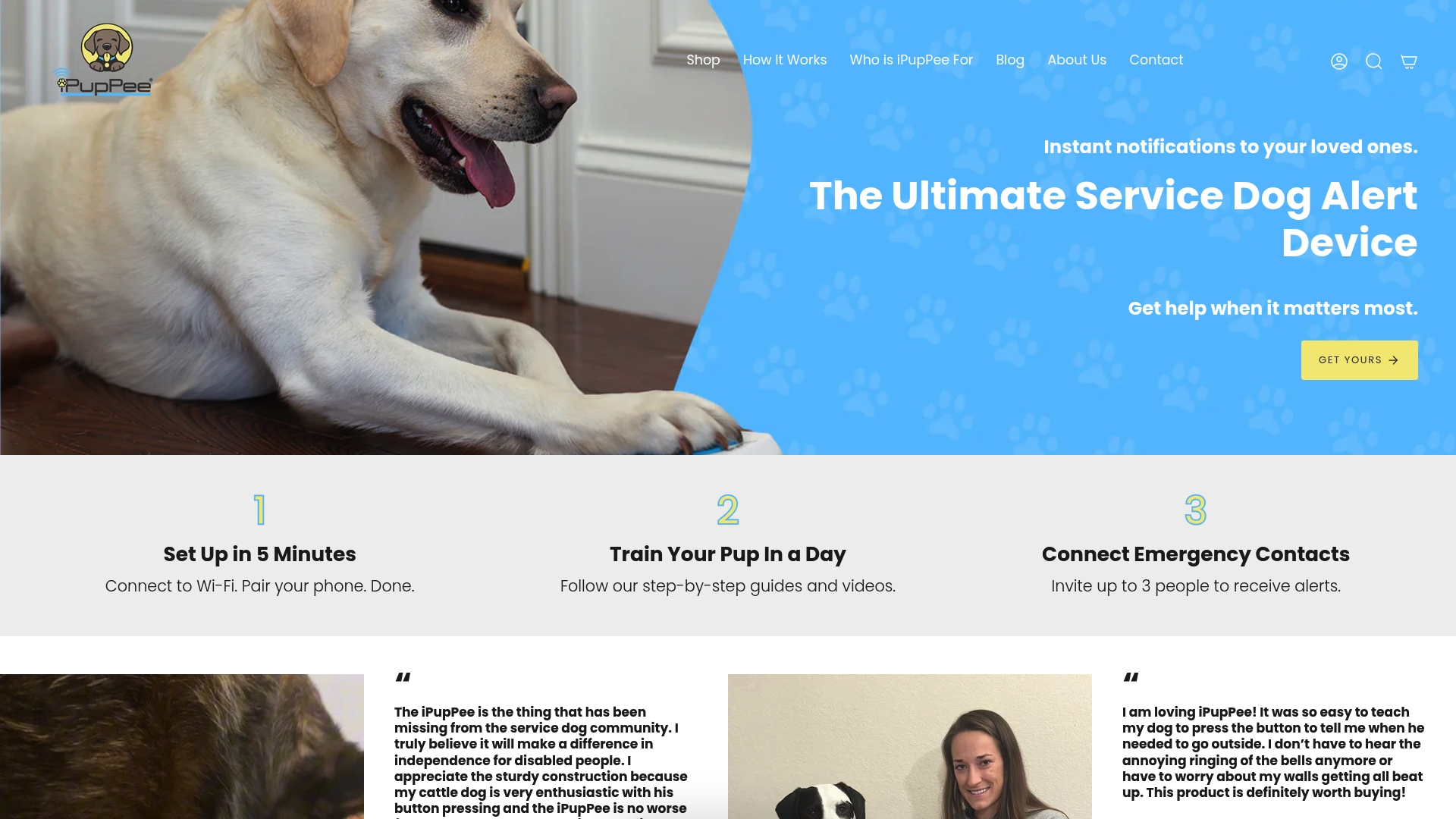
Give your service dog every advantage and increase your daily confidence. Explore how the iPupPee pet communication device bridges the gap between training and real-life support. With a simple button press, dogs can instantly alert you, your loved ones, or caregivers—bringing a new level of safety and instant understanding to your partnership. Learn how easy training, customer success stories, and safety resources can help you and your dog communicate on a whole new level by visiting ipuppee.com today. Take the next step toward total independence and peace of mind—discover our easy-to-use solutions and get started now.

